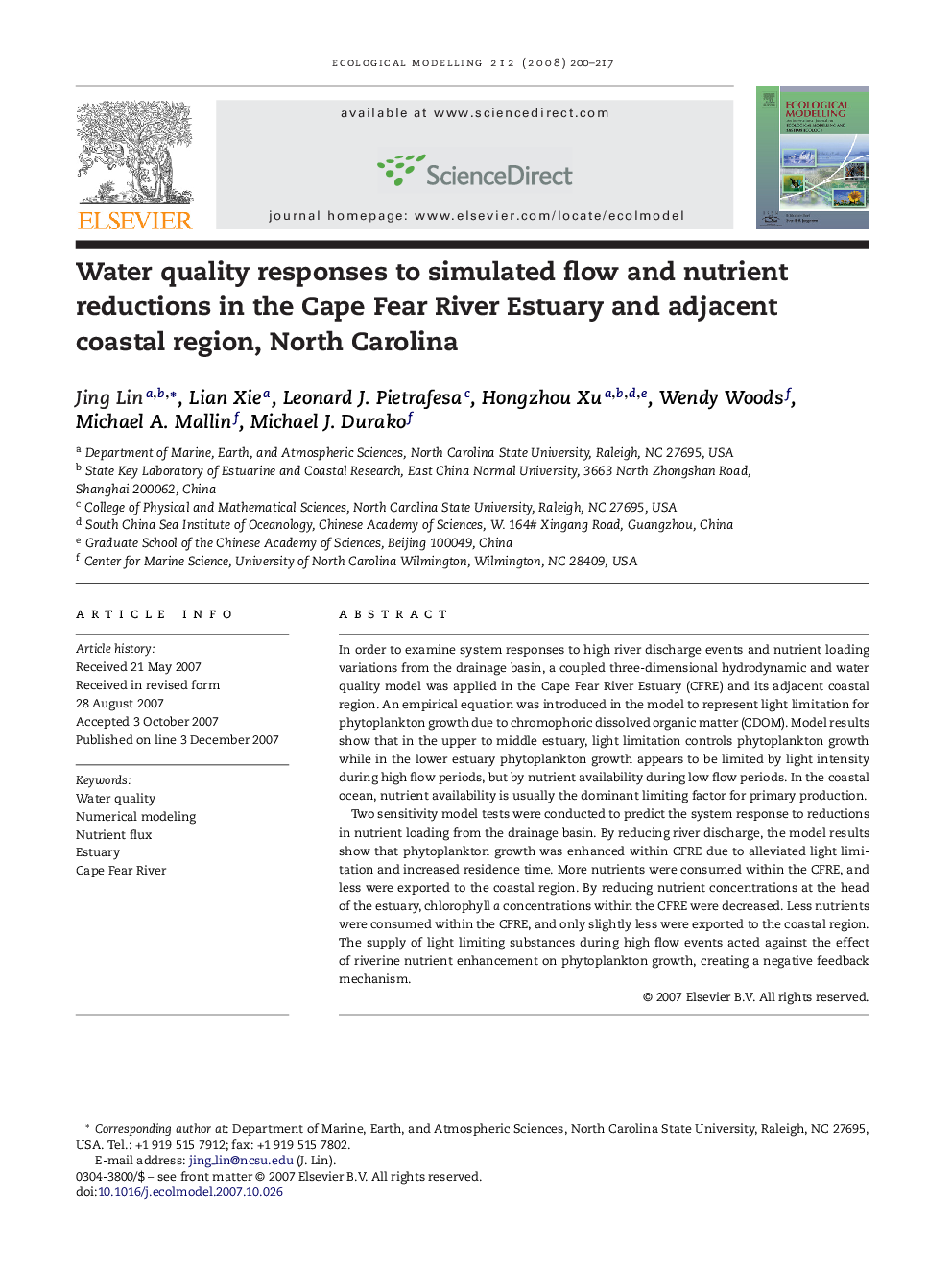| Article ID | Journal | Published Year | Pages | File Type |
|---|---|---|---|---|
| 4378303 | Ecological Modelling | 2008 | 18 Pages |
In order to examine system responses to high river discharge events and nutrient loading variations from the drainage basin, a coupled three-dimensional hydrodynamic and water quality model was applied in the Cape Fear River Estuary (CFRE) and its adjacent coastal region. An empirical equation was introduced in the model to represent light limitation for phytoplankton growth due to chromophoric dissolved organic matter (CDOM). Model results show that in the upper to middle estuary, light limitation controls phytoplankton growth while in the lower estuary phytoplankton growth appears to be limited by light intensity during high flow periods, but by nutrient availability during low flow periods. In the coastal ocean, nutrient availability is usually the dominant limiting factor for primary production.Two sensitivity model tests were conducted to predict the system response to reductions in nutrient loading from the drainage basin. By reducing river discharge, the model results show that phytoplankton growth was enhanced within CFRE due to alleviated light limitation and increased residence time. More nutrients were consumed within the CFRE, and less were exported to the coastal region. By reducing nutrient concentrations at the head of the estuary, chlorophyll a concentrations within the CFRE were decreased. Less nutrients were consumed within the CFRE, and only slightly less were exported to the coastal region. The supply of light limiting substances during high flow events acted against the effect of riverine nutrient enhancement on phytoplankton growth, creating a negative feedback mechanism.
